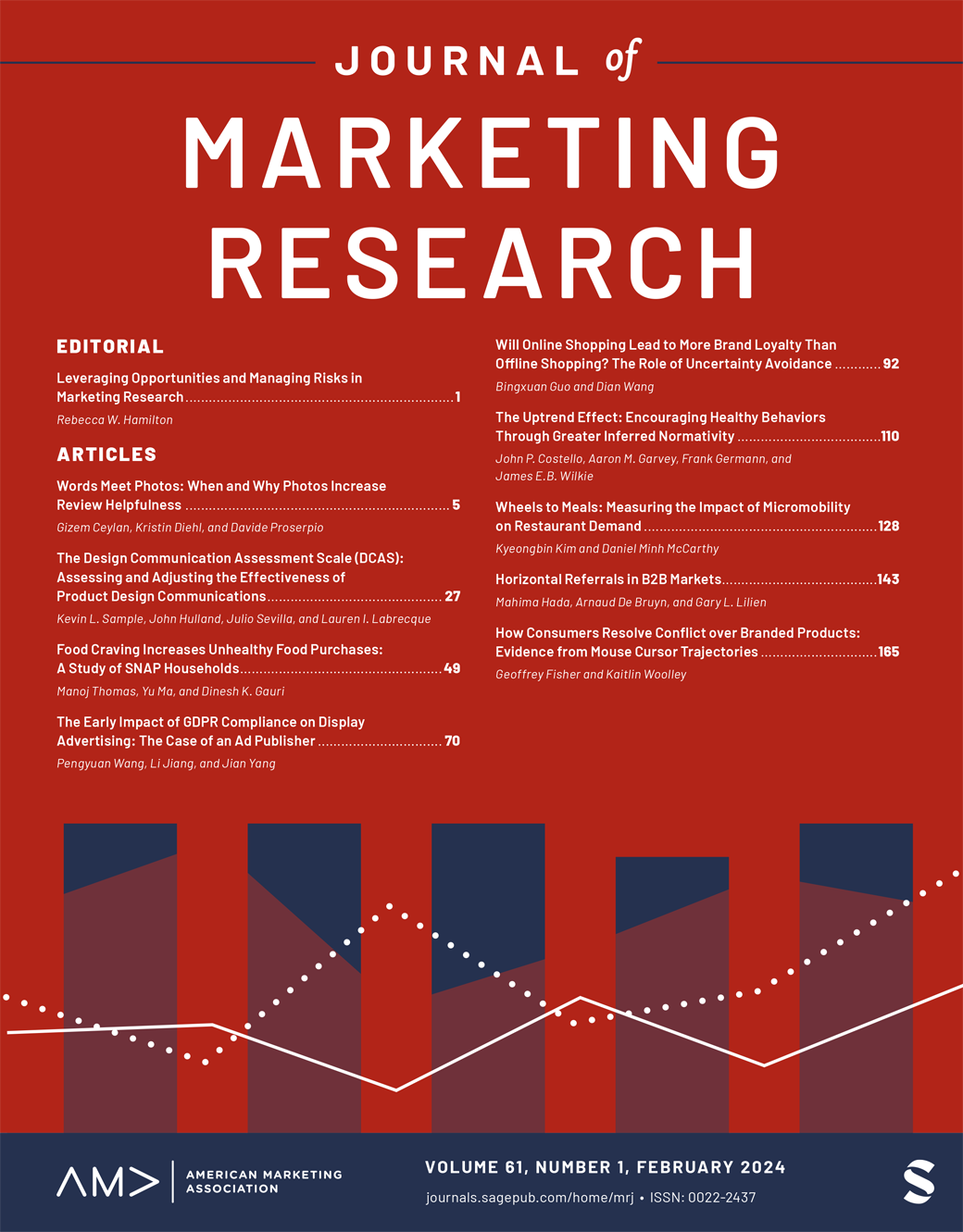EXPRESS: The Value of Safety Training for Business-to-Business Firms
IF 5
1区 管理学
Q1 BUSINESS
引用次数: 0
Abstract
Business-to-business suppliers invest in safety training programs believing such programs mitigate safety hazards, prevent workplace injuries, and create value for their customers. However, causal evidence of these effects is sparse. Study 1 uses site-level monthly data from a global oilfield services company. Exploiting sharp discontinuities in safety training hours due to catastrophic accidents, the authors find that a 10% increase in safety training hours per capita decreases safety hazards per capita by 6.45%−9.57%. Study 2 measures the causal impact of business establishments’ safety training intensity on preventing their workplace injuries: it leverages Local Law 196 requiring workers at construction establishments in New York City to complete at least ten hours of safety training. This legislation led to a 15.56%–18.84% decrease in injury rates at construction establishments in New York City relative to their counterparts. Study 3, a choice-based conjoint study of business-to-business procurement professionals, documents that the focal supplier’s investment in safety training increases the probability of its proposal being selected by those procurement professionals. Collectively, these findings validate the need for suppliers to invest in safety training programs as a risk-mitigation vehicle that has positive implications for business-to-business buying decisions.快讯企业对企业安全培训的价值
企业对企业供应商投资于安全培训项目,认为这些项目可以减少安全隐患、预防工伤并为客户创造价值。然而,这些效果的因果证据却很少。研究 1 使用了一家全球油田服务公司的现场月度数据。作者利用灾难性事故造成的安全培训时数的急剧不连续性,发现人均安全培训时数每增加 10%,人均安全隐患就会减少 6.45%-9.57%。研究 2 衡量了企业安全培训强度对预防工伤的因果影响:研究利用了要求纽约市建筑企业工人完成至少 10 小时安全培训的第 196 号地方法律。这项立法使纽约市建筑企业的工伤率与同类企业相比下降了 15.56%-18.84%。研究 3 是对企业对企业采购专业人员进行的一项基于选择的联合研究,结果表明,重点供应商在安全培训方面的投资增加了其提案被这些采购专业人员选中的可能性。总之,这些研究结果证明,供应商有必要投资于安全培训项目,将其作为降低风险的手段,这对企业对企业的采购决策具有积极意义。
本文章由计算机程序翻译,如有差异,请以英文原文为准。
求助全文
约1分钟内获得全文
求助全文
来源期刊

Journal of Marketing Research
BUSINESS-
CiteScore
10.30
自引率
6.60%
发文量
79
期刊介绍:
JMR is written for those academics and practitioners of marketing research who need to be in the forefront of the profession and in possession of the industry"s cutting-edge information. JMR publishes articles representing the entire spectrum of research in marketing. The editorial content is peer-reviewed by an expert panel of leading academics. Articles address the concepts, methods, and applications of marketing research that present new techniques for solving marketing problems; contribute to marketing knowledge based on the use of experimental, descriptive, or analytical techniques; and review and comment on the developments and concepts in related fields that have a bearing on the research industry and its practices.
 求助内容:
求助内容: 应助结果提醒方式:
应助结果提醒方式:


